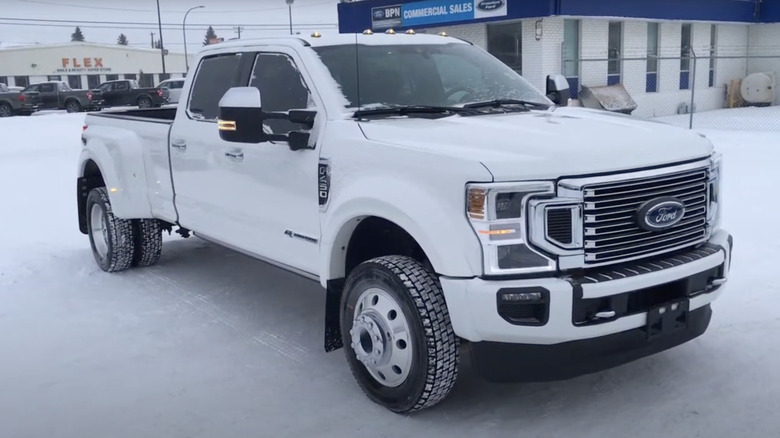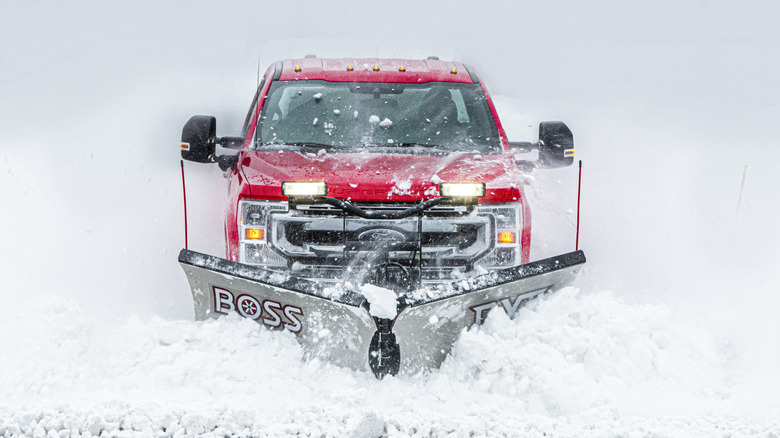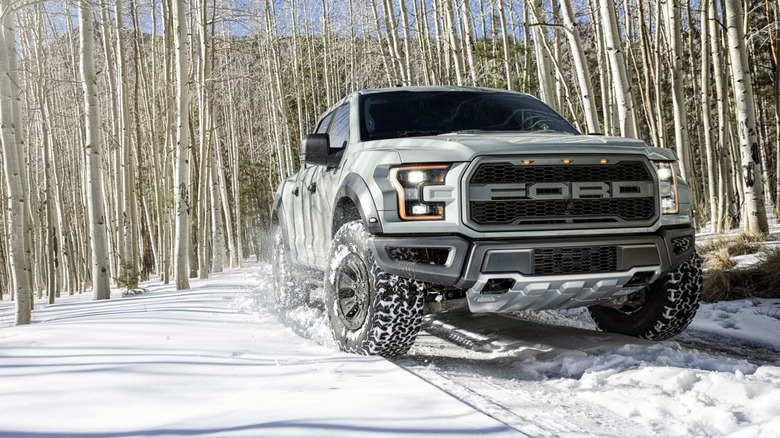Are Dually Trucks Any Good In Snow? Here's What Owners Say
If you are driving a dually truck, you already know that having four tires at the rear can be both a blessing and a curse. However, during winter, laws of physics don't bend for anyone, which is why snow and ice can easily turn the added stability into slippage if not properly managed. So, are duallys any good in snow? According to owners on the Powerstroke forum, good tires and decent weight in the bed of the truck are what make a dually a viable winter truck.
Over on the Ford-Trucks forum, owners agree, with a few reporting that adding sandbags over the rear axle is a good idea to maintain traction. Drivers on PlowSite also mention weight and snow-rated tires, with some routinely loading their trucks with 1,000+ pounds to keep them biting into snow. Ultimately, to get the most out of your dually truck on snow and ice, using 4WD paired with good tires and decent weight at the back can make it a whole lot more manageable.
Winter driving with a dually
With four tires at the rear, drivers shouldn't use traditional tire chains, but rather special dual triple truck wheel chain sets that cover both the inner and outer tires. This is also legally mandated in certain states, meaning that covering only the outer tires can get you fined. Unloaded dually trucks can also be more slippery to drive in the snow since the weight is constantly being distributed across six wheels instead of four, and thus the traction each tire gets is comparably limited.
Moreover, with two tires so close to one another, a dually can also suffer from snow packing between the two tires, causing traction problems. Also, be aware that while following a clear snow track behind a normal vehicle, your rear outer tires are likely going to plow, and that can affect traction since the entire rear axle is then more prone to floating on snow instead of digging in. This is why adding more weight at the back of your dually will force those tires to dig and thus provide better traction.
Are singles better than duallys?
With lighter use, city driving, or tight spaces, singles are easier to live with because they handle better, are easier to rotate, and come with fewer things that can break. It is also a lot easier to park a single because the rear wheel arches are not as wide. Singles are also cheaper to own since they need four wheels and tires instead of six, while, according to J.D. Power, they also cost about $900 to $2,000 less.
Singles are also safer in wet conditions, especially when it comes to hydroplaning, as having two tires on the rear means a smaller contact patch. Moreover, a dually can sometimes only be registered as a commercial vehicle, regardless of whether it is actually used for personal or commercial use, and that can drive costs up. On the flip side, one of the main benefits of a dually over a single has to do with towing and hauling capacity, which is one of the reasons why the best trucks for towing are often dually trucks.
According to Custom Offsets, "a heavy-duty single rear wheel truck can tow, say, like 18,000 pounds, but the dually equivalent of that with a diesel engine is capable of hauling over 30,000 pounds." A dually is also a lot less prone to tire blowouts since more tires can hold the weight. Lastly, with four wheels and a wider track, dually trucks are more stable while towing tall loads or during strong winds, regardless of whether those loads are heavy or light.


